When it comes to ensuring uninterrupted power for your home, business, or specialized equipment, choosing the right replacement generator is critical. Power outages can cause significant disruptions, from halting essential operations to compromising safety and comfort. This guide provides a comprehensive exploration of top-tier replacement generator solutions designed to meet a diverse range of power requirements. Whether you’re seeking portable options for temporary setups or robust standby generators for long-term reliability, we will help you identify the most efficient, durable, and cost-effective choices. Read on to uncover the key factors to consider, innovative technologies to look for, and practical recommendations that will empower you to make an informed decision tailored to your unique power needs.
How to Choose the Right Generator for Your Needs?
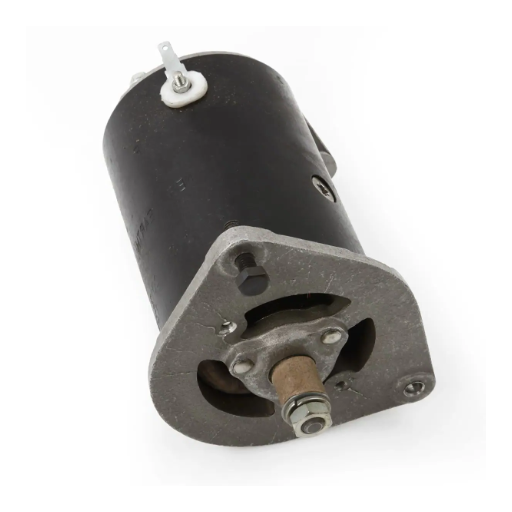
Understanding Different Types of Generators
Based on a generator’s design, fuel types, and it’s purpose, we can classify them under different categories. Knowing these distinctions is important to ensure that the generator fulfills the demands of the application. Here, we discuss the most widely used types of generators along with their descriptions.
- Portable Generators: Portable generators and diesel ones are considered as a system of unit that provide power in construction projects and residential projects. They are best suited for camping and first aid as they use gasoline or diesel as fuel. The generators can range from 1,000 to 10,000 watts of energy, which enables them to power different types of devices, such as lighting systems, refrigerators, and tools.
- Standby Generators: These generators are meant for fixed installations and automatically switch on when there is a power outage, ensuring an uninterrupted power supply to homes or facilities. They use natural gas or propane as fuel and are connected to the electric system of the building. Standby generators also come with high output capabilities of 10kW to 150kW or even more, thus meeting the electrical requirements of larger homes or commercial establishments. Although they may involve some capital expenditure, standby generators offer reliability and automation, especially in areas prone to outages.
- Industrial Generators: Industrial generators are high-capacity generators intended for a large range of operations, such as factories, hospitals, and data centers. Normally, these units function on diesel or gas, and their power output ranges from 50kW to several megawatts. Industrial generators are designed for durability and efficiency, often running under heavy usage conditions for extended periods. Along with advanced load management features, these generators are best suited for mission-critical environments due to their robust construction and compliance with strict safety standards.
- Inverter Generators: An Inverter generator is one of the most advanced generator types. Its sophisticated electronics and modern engine technology provide smoother and cleaner power output than portable generators. Sensitive electronics such as medical devices, audio equipment, laptops, etc., can be powered by them with more efficiency. Inverter generators also happen to be the lightest, most fuel-efficient, and quietest of all kinds, producing anywhere between 1,000 to 4,000 watts. Because of their compact size, these generators are not suitable for heavy-duty tasks or for powering an entire household.
- Solar Powered Generators: This kind of generator is the most environmentally friendly. It stores energy harvested from the sun in its built-in batteries. Because they are solar powered, these units are ideal for remote areas with limited access to fuels or low-electricity areas. They do face a problem, though. The generator is completely dependent on the weather, and during long outages or high power consumption periods, their lack of energy storage becomes a huge problem.
In general, when determining which type of generator one should buy, consider factors such as availability of fuel, power, maintenance, noise level and operation cost.
Assessing Your Power Needs for Optimal Selection
One of the most important steps in choosing a generator is knowing your power needs. This includes all the tools, appliances, and systems that need power during a blackout or off-grid setting, and their starting and running wattage should also be calculated. Starting wattage is the power required to turn on an appliance, while running wattage is the constant power needed to keep it operational. For example, a refrigerator, air conditioner, and power tools have starting wattages that can be several times their running wattages.
There is a difference in power consumption patterns across residential, commercial, and industrial sectors. In a household, and at the consumer level, basic appliances such as ghanges, light, smaller electronics, and refrigerators work together to meet the demand of 3000 to 7500 watts. Commercial and industrial applications tend to use far more than 10,000 watts, depending on the equipment and their operational needs.
to maximize dependability or efficiency, adding a margin beyond your calculated wattage is recommended in the event of power spikes or new devices coming into play. most modern generators come with detailed specifications of their rated and maximum power capacities which helps to choose the ones that best suit to real world.
What are the Essential Generator Parts and Accessories?
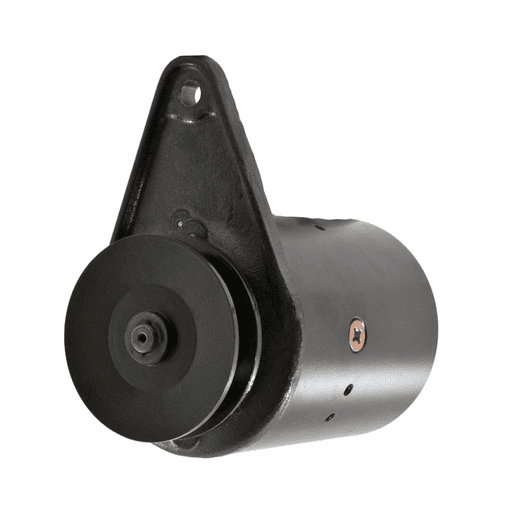
Identifying Critical Replacement Parts
You should target the most critical components that are vital for the functioning and are prone to wear and tear over time or in adverse conditions when determining the selection of critical replacement parts for a generator. The parts that are essential for replacement include the following:
- Air Filters: Without air filters, debris and dust will enter the engine, thereby hindering its working and also reducing the lifespan of the engine. The unit must be checked at certain intervals and changed to ensure air is not blocked, hence power surge (increase in power generated) is not obstructed.
- Oil Filters: The oil filter is essential in removing a variety of additives and other foreign materials from the oil that are either harmful or would otherwise while the engine is working, form perpetually glued to the moving parts in the motors rotor. When oil filters become blocked, they restrict oil flow and increase the amount of heat and wear created sludge. Therefore, timely maintenance of these filters becomes essential.
- Spark Plugs: These parts are essential as without them, there would not be any spark created, which is crucial for combusting the fuel-air mixture in the motor. For any reason if there are out-of-date or burnt-out spark plugs, it will increase the chances of misfiring, poorer efficiencies, and will heighten the chances of an engine failure. Ensuring spark plugs are substituted within the set readings guarantees steady functioning of the equipment.
- Fuel Filters: The fuel filter is critical for the accurate cleaning of the fuel as if these fuel filters are not present impurities present in the fuel will mix with the engine, harming the whole fuel injection system, and in a wider aspect damaging the engine greatly. Rest assured having these filters replaced periodically will lessen the chances of contamination and associated damage to the fuel.
- Belts and Hoses: These parts undergo damage with time owing to heat, friction, and stress. Splits or damage to the belts can impact the generator’s performance and broken hoses can cause coolant or fuel leakage. Regular inspections and replacements are critical.
- Battery: The battery supplies starting power to the generator. Batteries tend to lose charge or get damaged over time, so testing and replacing them is essential for smooth operations during critical situations.
- Brushes and Regulators: Voltage output stability is overseen by voltage regulators and alternator contactors are known as brushes. Failure to these parts will cause irregular power output which makes them very crucial to monitor and replace when necessary.
Keeping an adequate supply of these important generator repair components on hand, along with following the service guides from the manufacturers, increases the durability and dependability of your generator, reducing potential unexpected downtimes.
Must-Have Accessories for Enhanced Performance
Accessories enhance the efficiency and reliability of your generator, so an investment in the right ones can lead to improved performance. Below are listed accessories that maintain generator performance and flexibility in varying operational conditions.
- Automatic Transfer Switch (ATS): This is an automatic device that enables smooth cancellation and resumption of generator power. An ATS switches the load from the main utility to the generator during an outage and automatically reverts to the main utility when it’s restored. The ATS performs this mitigating manual intervention, minimizing downtime and protecting equipment from interfering with sudden power shutdowns.
- Extended Fuel Tanks: Remote sites or areas where refueling is difficult greatly benefit from extended fuel tanks. These tanks increase the generator’s running time by providing additional fuel capacity for extended, unsupervised operation.
- Load Management Systems: These systems ensure no overload occurs and that essential equipment receives adequate energy by equal distribution of power. It is through real time monitoring of consumption of power that these systems optimize generator output and increase the lifetime of the system.
- Remote Monitoring Kits: With advanced remote monitoring kits, users can now track critical fuel level metrics, oil pressure, and engine runtime using mobile apps or web portals. These tools enable predictive maintenance, minimize the risk of sudden failures, and improve diagnostic detail.
- Cold Weather Kits: For operating in colder regions, these cold weather kits facilitate functionality in sub-zero temperatures by including block heaters and battery warmer. These kits also aid in preventing internal fluids from freezing and ensure dependable starting during severe weather.
- Protective Enclosures: Noise reduction and environmental protection is equally important when considering outdoor applications. Weatherproof and sound-proofing enclosures shield the generator from harsh weather, reduces operational noise, enhances overall durability, and increases serviceable life.
Improved lifespan, uninterrupted power delivery, and enhanced performance of the generator can be achieved through the appropriate operationally tailored accessories.
How to Maintain and Extend the Lifespan of Your Generator?
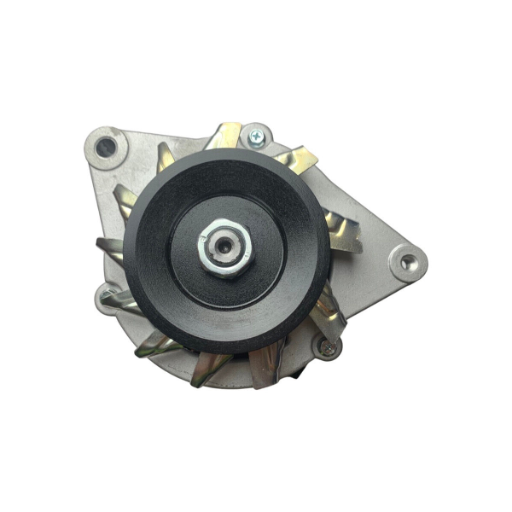
Proactive Generator Solutions to Avoid Downtime
To facilitate smooth operations on your generator, preventing any tangential effects, implementing proactive measures is crucial. One of the drawbacks of ATS is how it is largely dependent on human interfaces which are prone to delays during an outage.
Real-time monitoring, on the other hand, provides digital data on the current fuel, temperature, and load capacity, which enhances user control. Early detection through advanced sensors enables operators to avert damage due to overheating or fuel blockages before they escalate, maximizing uptime as no loss is incurred and optimizing maintenance based on it instead of on intervals.
Fuel blockages may be one of the many causes of system failures and are easily avoided with preemptive remote maintenance strategies. Such inspections and replacements of key components on the other hand can be facilitated with the help of maintenance contracts from credentialed contractors.
Monitoring using IoT devices paired with off peak servicing hours allows perfect synergy ensuring no tangential effects are caused, allowing basis on actual service loads rather than on theoretical projections.
Lastly, having crucial spare parts like oil filters, fuses, and spark plugs readily available decreases downtime. If possible, prompt repairs can be carried out with minimal disruption to operations in case of unanticipated part failures. The integration of these approaches enables effective system reliability for power infrastructure, allowing for the continuous operation of generators under heavy loads.
Signs It’s Time to Replace Your Generator
While they certainly help with providing necessary power on standby, generators are not free from wear and tear. Finding the optimal time for replacement comes down to smartly monitoring multiple pointers. An important sign of deterioration would certainly be a significant drop in effectiveness. If your generator regularly seems to fail at meeting power output expectations or is exhibiting lowered fuel efficiency, it is probably time to retire it.
This consideration is of great significance, especially when it comes to determining the modification or manipulation rate for a machine which, after comparison with a new model, seems more expensive than fifty percent. In addition, older generators, particularly those that have served more than 10-15 years, could be out of phase with modern machinery or updated emission restrictions, which can render them inefficient and at risk from a regulatory standpoint.
Another aspect that needs primary attention is dependability and responsiveness. A generator that makes provision for breakdowns, does not switch on at set intervals (i.e. outages), can no longer be categorized as reliable. This becomes all the more important in areas where power is sensitive like healthcare, data centers, military, and financial services.
In addition, an abnormal generator operation sound or vibration could suggest that the equipment is internally worn out or damaged to a level where replacement is unavoidable. It is advisable to monitor the usage hours, too, since there are limits in the form of lifespan thresholds set by the manufacturers, which, once crossed, drastically increase the likelihood of failure.
Noticing these signs allows organizations to upgrade to advanced generator technology that would enhance reliability while improving operational resilience, helping further reduce long-term organizational costs.
What are the Benefits of a Standby Generator?
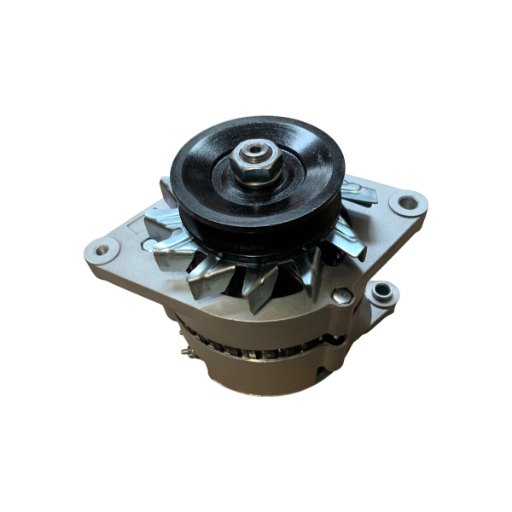
Ensuring Dependable Power During Outages
Having standby generators ensures that there are no interruptions to the critical areas that require power during unexpected power cuts. These systems can be equipped with automatic transfer switches that detect power disruptions and activate instantly. This guarantees that services such as healthcare IT infrastructure and refrigeration units do not stop operating.
By utilizing advanced fuel management systems as well as other diagnostics, modern standby generators have been engineered to be highly reliable and efficient. Moreover, diesel and natural gas generators are designed to be aligned with varying operational demands. These generators are capable of providing stable power and effectively handling variable loads. Moreover, emission control advancements have greatly reduced the impact these systems have on sensitive areas.
Prolonged power outages have suddenly started becoming a lot more common due to older electrical grids and harsh weather. Having a standby generator greatly reduces the impact on finances caused by power disruption while safeguarding important business data. Furthermore, maintaining a health check ensures that the generators function optimally at times of emergency and help operational resilience.
Comparing Standby vs. Portable Generators
There are several factors to take into account when comparing a standby generator to a portable generator. These include power output, installation requirements, convenience of operation, and cost-effectiveness. Standby generators automatically deliver backup power during outages. These generators are installed into a home’s or business facility’s power systems and are usually connected to a dedicated fuel source, like natural gas or propane. Unlike most portable generators, standby generators have a higher power capacity, which allows homes and businesses to use them for energy-intensive operations for longer periods. A key advantage is their automated functionality, which saves the user the hassle of starting it up in emergencies like a power outage.
On the other hand, portable generators are designed for temporary use. Unlike standby generators, portable generators use unleaded gasoline or diesel and typically have lower upfront costs. Their compact and versatile design makes them easy to move from one location to another. While portable generators are cost-effective, their output is limited, making them suitable for powering only essential devices and appliances. In addition, portable generators require frequent refueling and produce higher levels of noise, which could be problematic in residential neighborhoods.
Innovations with inverter generators and dual-fuel systems have increased flexibility and lowered environmental impact. However, standby generators are still favored in scenarios that require constant, high-volume power output. Portable generators, on the other hand, are best for supplemental power in auxiliary, less complex applications.
Installation and Transfer Switch Considerations
Installing a generator requires careful planning to guarantee safety, local code compliance, and ideal performance. For standby generators, professional installation is a requirement since the unit has to be integrated into the building’s electrical system, which usually requires trenching for fuel and power cables. Choosing the site of installation is equally important; the generator must lie on a stationary platform to reduce vibration while observing clearance restrictions to avoid fire or overheating fires. There are also issues related to residential noise pollution that should be addressed with soundproof enclosures.
In generator systems, a transfer switch is an essential part because it serves as the channel that switches power from the generator to the electrical panel when utility power is absent. In standby systems, especially in settings with high power reliability demands, like hospitals or data centers, Automatic Transfer Switches(A.T.S.) are best used for these applications due to their uninterrupted power supply and seamless switching capabilities. For portable generators, cost-effective solutions, which are manual transfer switches,s are available, but these require user action during an outage. To avoid overloading and electrical faults, both types require counterpart units that correspond to the generator’s output capacity.
The use of reliable transfer switches greatly increases operational safety by eliminating backfeeding risks, improves dynamic voltage and frequency stability during operation, and ensures the generator does not droop. National Electric Code and International Residential Code standards must, without exception, be followed to guarantee local regulation compliance and safety during installation.
Is a Generator Replacement or Repair the Better Solution?
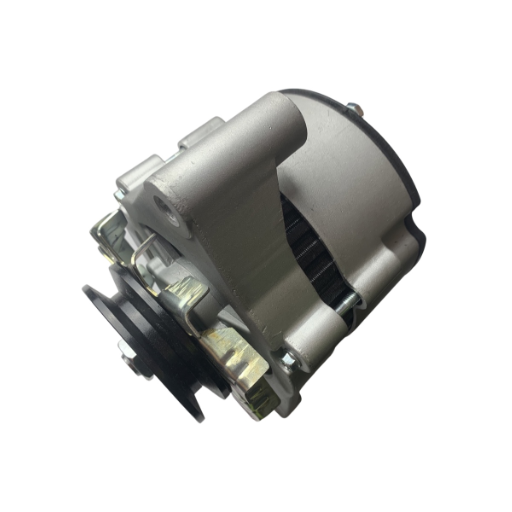
Evaluating Costs: Repairs Versus Replacement
When analyzing the costs involved in repairing or replacing a generator, multiple elements of operational value must be taken into consideration. Repairs usually mean rectifying certain issues, sometimes involving component replacement, shorted circuits, or issues with the fuel system. While repairing cost is usually cheaper in the short run, lack of prompt action on persistent issues over time might result in additional costs exceeding those incurred by replacement. Furthermore, older generators tend to inefficient and more prone to breakdowns adding to operational expenses.
Replacing a generator incurs a high initial cost, however, it offers great value over the long term. Unlike older models, modern generators offer better fuel economy, higher load-bearing capacity, and lower emissions, which are aligned with current societal norms. In addition, new units drastically lower maintenance costs due to manufacturer’s warranties for parts and reduced lifespan of the unit.
Considering factors such as a generator’s age, repair history, and overall operational efficiency are key steps in the decision making process. Industry benchmark analyses indicate replacement becomes the more financially intelligent decision when the cost of repairs exceed 50% of the replacement cost, or if the remaining lifetime of the generator, dependent on fuel and maintenance used, is almost up.
Determining Reliability and Efficiency
The efficacy and reliability of generators are fundamentally tied to their design, maintenance, and operational context. For consistent output under challenging conditions, high-grade generators are constructed to meet performance benchmarks. Unfortunately, reliability is often hindered due to unpredictable downtimes and inefficiencies arising from internal component wear, inadequate servicing, substandard fuel, or servicing neglect.
Further, generator efficiency has been improved by technological advancements through variable load optimization, advanced fuel injection systems, and improved cooling systems. Generators with automatic controls, for example, can reduce emissions and fuel consumption through dynamically lowering output in response to shifting load demand.
Operation data shows that exceeding 90% efficiency is attainable with strict preventative maintenance and premium fuel on modern combustion systems. Those heavily reliant on inconsistent energy sources or poorly maintained systems emphasize the need for ongoing upkeep as they stagnate below 70% efficiency.
Reference Sources
Frequently Asked Questions (FAQs)
Q: How do I determine when I need a replacement generator?
A: If your current generator is frequently breaking down, showing signs of wear, or not providing sufficient power output, it may be time to consider a replacement generator. Consulting a technician can help assess the condition of your old generator.
Q: What are the benefits of a high-quality generator for power generation?
A: High-quality generators ensure a reliable power supply, offer higher efficiency, and often come with better technical support. They typically have a longer lifespan and require less maintenance, providing more stability for your power systems.
Q: How does regular maintenance affect the performance of a backup generator?
A: Regular maintenance is crucial in keeping your backup generator running efficiently. It helps prevent unexpected breakdowns and ensures that your generator is ready to provide a reliable power supply when needed.
Q: What are the key features of an energy-efficient home standby generator?
A: An energy-efficient home standby generator should have a high power output with low fuel consumption, advanced alternator technology, and reliable starting mechanisms. It should also be capable of connecting to your existing power systems seamlessly.
Q: What role does a dealer play in acquiring a new generator?
A: A dealer can provide expert advice on selecting the right generator to meet your power needs. They can offer insights into the latest models, assist with installation, and provide ongoing technical support to ensure your generator operates smoothly.
Q: How does a brushless alternator benefit a generator?
A: A brushless alternator improves the efficiency and longevity of a generator by reducing mechanical wear. It requires less maintenance and offers better performance, making it ideal for both commercial and home standby generators.
Q: Can an OEM generator be a good option for replacement?
A: Yes, an OEM generator can be a good replacement option as it is designed to meet specific power needs and often integrates seamlessly with existing power systems. OEM generators are built to original specifications, ensuring compatibility and reliability.
Q: How can I address power instability with my current generator setup?
A: If you’re experiencing power instability, it might be due to an inadequate power output from the generator. Consider upgrading to a more powerful or energy-efficient model, or consult with a technician to evaluate and improve your current setup.








